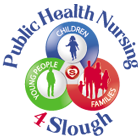CHILD ABUSE
Child abuse is any action by another person, adult or child, that causes significant harm to a child.
It can be physical, sexual or emotional, but can just as often be about a lack of love, care and attention. We know that neglect, whatever form it takes, can be just as damaging to a child as physical abuse.
Physical
Children who are emotionally abused suffer emotional maltreatment or neglect. It’s sometimes called psychological abuse and can cause children serious harm.
Sexual
A child is sexually abused when they are forced or persuaded to take part in sexual activities. This doesn’t have to be physical contact, and it can happen online
Emotional
Children who are emotionally abused suffer emotional maltreatment or neglect. It’s sometimes called psychological abuse and can cause children serious harm.
Neglect
Neglect is the ongoing failure to meet a child’s basic needs. It’s dangerous and children can suffer serious and long-term harm.
Online abuse
Online abuse is any type of abuse that happens on the web, whether through social networks, playing online games or using mobile phones.
Sexual Exploitation
Child sexual exploitation is a type of sexual abuse in which children are sexually exploited for money, power or status.
Female genital mutilation
Female genital mutilation (FGM) is the partial or total removal of external female genitalia for non-medical reasons.
Bullying and cyberbullying
Bullying can happen anywhere – at school, at home or online. It’s usually repeated over a long period of time and can hurt a child both physically and emotionally.
Domestic abuse
Witnessing domestic abuse is child abuse, and teenagers can suffer domestic abuse in their relationships.
Child trafficking
Child trafficking is a type of abuse where children are recruited, moved or transported and then exploited, forced to work or sold.
Grooming
Children and young people can be groomed online or in the real world, by a stranger or by someone they know – for example a family member, friend or professional.
Harmful sexual behaviour
Children and young people who develop harmful sexual behaviour harm themselves and others.
The Underwear Rule
As it can sometimes be very difficult to discuss issues surrounding child abuse, the NSPCC has launched a campaign designed to help parents talk to their children about keeping safe. More information can be found by visiting the NSPCC website or by downloading one of the guides below:
The Underwear Rule – A brief guide for parents and carers
The Underwear Rule – A child friendly guide
https://www.nspcc.org.uk/preventing-abuse/keeping-children-safe/underwear-rule/
Signs and symptoms
Children develop and mature at different rates. So what’s worrying for a younger child, might be normal behaviour for an older child. If a child looks or acts a lot older or younger than their age, this could be a cause for concern.
However, if a child develops more slowly than others of a similar age and there’s not a cause such as physical or learning disabilities, it could be a sign they’re being abused.
If you are worried about a child Ring 0808 800 500

